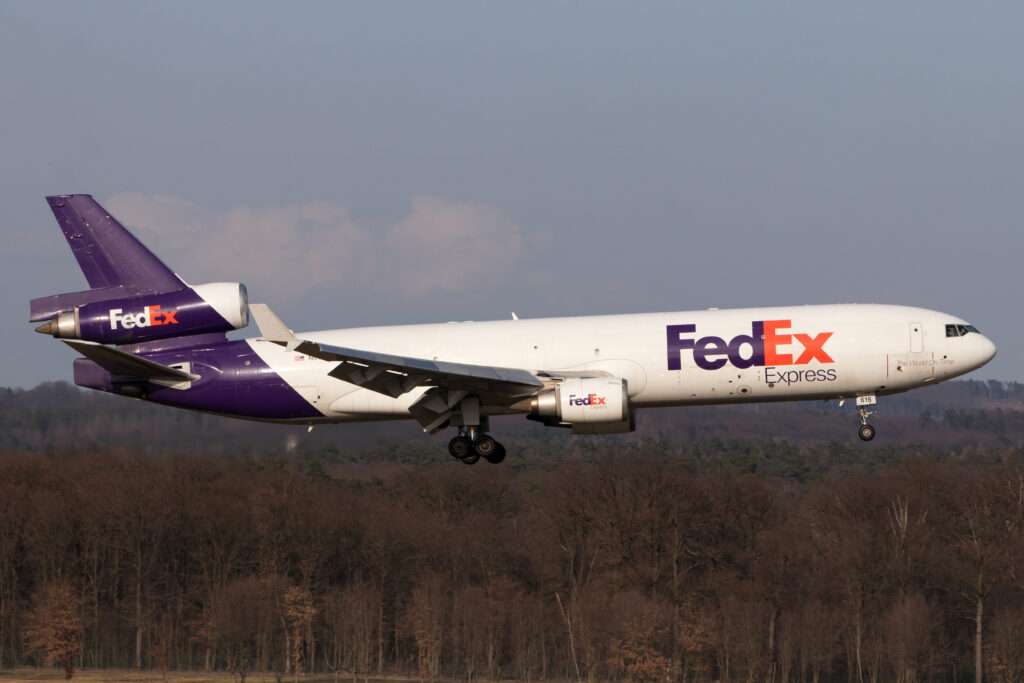FedEx, a name synonymous with fast and reliable delivery, has revolutionized the way we ship goods.
But the story of FedEx isn’t just about trucks and packages; it’s deeply intertwined with the history of aviation.
From its humble beginnings with a fleet of jets to its current status as a global air cargo leader, FedEx’s journey in the skies has been one of innovation and ambition.
From Vision to Takeoff: The Early Days (1971-1984)
The seeds of FedEx‘s aviation legacy were sown in 1971 by Frederick W. Smith, a Yale undergraduate with a bold vision.
Recognizing the growing need for fast and reliable delivery, Smith envisioned a system that utilized air transportation to revolutionize overnight shipping.
With initial funding and a strategic move to Memphis, Tennessee, due to its central location and favorable weather patterns, Federal Express Corporation (FedEx) took flight in 1973.

The company’s inaugural operation on April 17th, 1973, was a landmark moment.
Fourteen Dassault Falcon 20 jets, affectionately nicknamed “Flying Doctors” for their resemblance to medical planes, connected 25 US cities.
This marked the start of a new era in express delivery, where speed and reliability were paramount.
The Falcon 20s, chosen for their fuel efficiency and ability to operate on short runways, perfectly suited FedEx‘s initial network focused on domestic overnight service.
The early years were marked by rapid growth.
FedEx understood the critical role of its air fleet and continuously expanded its network.
By 1981, the company had introduced overnight letter service and begun deliveries to Canada, further solidifying its position as a leader in time-sensitive shipping.
Expanding Horizons: Going Global (1984-1989)
FedEx’s ambition to become a global player became a reality in 1984.
The company launched intercontinental operations, extending its reach to Europe and Asia.
This expansion necessitated a shift in its aircraft strategy.
The limitations of the Falcon 20s for long-haul flights became apparent.
To conquer new frontiers, FedEx looked to larger, more capable aircraft.

This led to the acquisition of Gelco Express International, a global courier service, in 1984.
This strategic move not only expanded FedEx’s reach but also brought a new set of aircraft to the table, including Boeing 727s and 737s, better suited for longer distances.
A Transformative Acquisition: The Flying Tigers Join the Flock (1989)
A pivotal moment in FedEx’s aviation history arrived in 1989 with the acquisition of Flying Tiger Line, a renowned US cargo airline.
This move not only significantly bolstered FedEx’s international presence but also provided a diverse fleet of long-haul aircraft, including workhorse Douglas DC-8s and the iconic Boeing 747.
These larger jets allowed FedEx to establish a truly global network, efficiently transporting packages across vast distances.
The Flying Tigers acquisition also brought valuable expertise in cargo handling and logistics.
By integrating Flying Tigers’ knowledge and infrastructure, FedEx further streamlined its operations, solidifying its position as a leader in the international air cargo market.
Modernization and Diversification: The 21st Century and Beyond (1990-Present)
FedEx has never been content to rest on its laurels.
Throughout the 1990s and into the 21st century, the company has continued to modernize its fleet and diversify its offerings.

The introduction of the MD-11 in the early 1990s marked a significant upgrade.
These fuel-efficient, long-range jets offered greater capacity and operating range, allowing FedEx to further optimize its global network.
FedEx also embraced newer technologies, incorporating next-generation aircraft like the Boeing 777 Freighter into its fleet.
Furthermore, FedEx recognized the growing demand for expedited services.
In response, the company launched FedEx Express dedicated freighters, offering faster transit times for critical shipments.
Today, FedEx boasts one of the most advanced and diverse air cargo fleets in the world.
From the nimble ATR turboprops used for regional deliveries to the behemoth Boeing 777 Freighters traversing continents, FedEx has an aircraft for every need.
The company continues to invest in new technologies like autonomous drones and vertical takeoff and landing (VTOL) aircraft, demonstrating its commitment to staying at the forefront of air cargo innovation.
Conclusion: A Legacy of Innovation
FedEx’s story in aviation is one of constant evolution.
From its humble beginnings with a fleet of Falcon 20s to its current position as a global leader with a diverse and technologically advanced fleet, the company has consistently pushed boundaries.
FedEx’s commitment to innovation in aviation has not changed, with their future looking bright, despite post-pandemic cargo volumes dropping.
All eyes will be on what they have in store going into the future.

Click the banner to subscribe to our weekly newsleter.

Click the photo to join our WhatsApp channel so then you can stay up to date with everything going on in the aviation industry!









